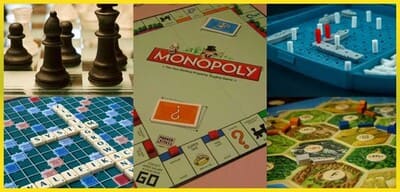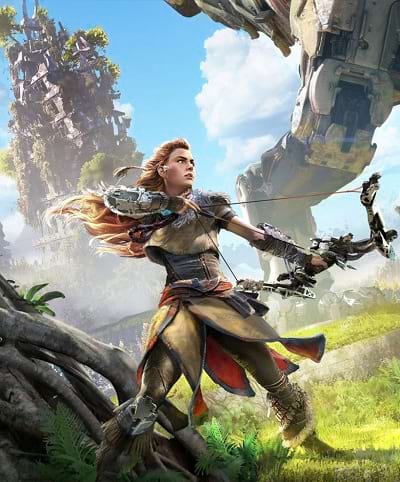The History and Evolution of Popular Board Games
From world championships across the globe to game nights at people’s homes, various famous board games have always been popular amongst different age groups.
Can you imagine that the popular board games market has grown at an exponential 40% year over year over the past decade and is also amongst Kickstarter’s most-funded project categories (according to The Guardian).
A board game is any tabletop game played on a surface or ‘board’ with pieces to be moved around within the demarcated space. Board games have been around for eons, literally, and some experts reckon that mankind invented some types of board games even before we discovered using language as a mode of communication with each other.
STUDY BOARD GAME DESIGN & DEVELOPMENT WITH SEAMEDU’S DEGREE PROGRAM
History of Board Games
The history and evolution of board games is quite fascinating, since they have always been an important part of human culture and tradition. While prehistoric games used dice or pieces that were made by carving stone or wood, with time, we started creating more evolved games.


Origin of Popular Board Games
Here are some of the most important games in the historical timeline of popular board games and places where they originated before spreading to other parts of the world:
- Dice (Place of origin unknown)
- Senet (Ancient Egypt)
- Hyena (Middle East Asia)
- Royal Game of Ur (Iraq)
- Ludus Duodecim Scriptorum (Roman Empire)
- Backgammon (Ancient Mesopotamia)
- Ludus Latrunculorum – Medieval Latin name for Chess (Roman Empire)
- Liubo (China)
- Tafl (Northern Europe)
- Chaturanga (Ancient India)
- Shatranj (Persia)
- Snakes and Ladders (India)
- Mad Queen Chess (Western Europe)
- Pachisi / Chaupar / Ludo (Mughal Empire, India)
- Mancala (Eastern Africa)
- The Landlord’s Game (America)
- Settlers of Catan (Europe)
While some popular board games are driven by luck and chance, others involve a lot of planning, strategy and quick wit on the players’ part. Most famous board games involve at least two players pitted against each other, with the pieces being moved around according to the gameplay rules in order to collect a certain number of predefined points.
In the mid and late-1990s, the popularity of famous board games rose to an incredible level. The exposure of modern famous board games to a worldwide audience meant that the industry started to flourish and we had a considerable increase in the number of popular board game design and development companies.
Bestselling Contemporary Board Games
1. Chess
By far the bestselling board game of all time, chess throws up endless possibilities and involves strategic decision-making at every step. The luck factor doesn’t play any role here, which bodes well for chess to be considered a specialized game that players win based on their intelligence, strategy and preemption.
2. Monopoly
A lengthy game that relies largely on luck, Monopoly involves rolling the dice and taking turns to buy property, pay rent to the other players and several other interesting steps using fake currency. This popular board game has gone through numerous minor tweaks over the years, but still remains one of the most sought-after famous board games in the market even today.
3. Scrabble
An innovative and dynamic tabletop game, Scrabble uses a standard dictionary-and-crossword-puzzle format and lettered tiles (with points) to form meaningful words. Linguistic skills, vocabulary, and spelling abilities are at play as players try to outscore each other and gain big points.

Explore how Seamedu can significantly enhance and elevate your Game Art & Design.
Hands-On Training: Practical exercises for real-world Game Art & Design.
Industry-Expert Faculty: Learn from seasoned professionals.
Networking Opportunities: Connect with industry professionals for career-enhancing possibilities.
 +91 020 46607500
+91 020 46607500
4. The Settlers of Catan
A dynamic board game that involves building and gaining holdings, the trading of resources is a particularly interesting aspect of The Settlers of Catan. The goal for a player is to increase their settlement in size and correspondingly earn points.
5. Battleship
What started as a pen-and-paper game is today one of the most fascinating board games involving sinking the enemy’s ships. This thrilling game, too, calls for informed planning and outsmarting the opponent. The idea is to have your boats in strategic positions and outnumber the rival’s army.
Pictionary, Candyland, Ludo, Anti-Monopoly, The Game of Life, Clue, Trivial Pursuit, and Cards Against Humanity are top-rated contemporary famous board games worldwide. Over time, popular board games have become archaic, especially since the era of video games began. However, the demand for board games has multiplied significantly with drastic improvements in game design and development areas, including artwork, game components, visuals, graphics, mechanics, and gameplay dynamics.
At Seamedu School of Pro-Expressionism, game design and development courses include a critical ‘practical learning’ aspect. We encourage students to develop innovative ideas for creating novel, famous board games. We also conduct game design workshops and board game fests to help students execute their ideas and bring concepts to life.
Unlock Your Child's Potential in Game Art & Design.
Is your child ready to embark on a journey in Game Art & Design? Complete the form below to help them take their first step towards their passion.
Fill Out the Form

CATEGORIES
Are you aspiring to become a proficient Game Art & Design professional?
Look no further; we are committed to nurturing the potential of young minds. Are you ready to enhance your skills?


